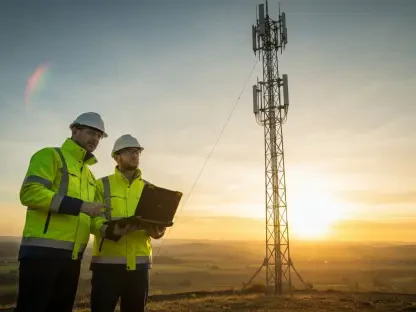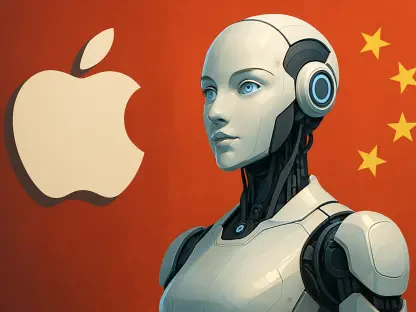Mobile technology in the form of BPA (Business Process Automation) has brought about a transformative shift in how we communicate, access information, and interact with the world around us. Did you know that around 66% of organizations have already automated at least one of their internal processes? This influence extends far beyond mere communication devices, encompassing a vast array of hardware, software, and services that have become integral to business operations.
The hallmark of communications tech is its portability and accessibility, which have redefined the way we experience entertainment and stay productive while on the go. That said, in this article, we’ll delve into the finer details of mobile tech, as well as the benefits of implementing BPA into your internal operations.
Mobile Technology
At the core of communications tech are the devices themselves, designed for convenience and mobility. Smartphones, tablets, and wearable devices such as smartwatches are the epitome of this industry. These tools are empowered by sophisticated operating systems that serve as the bridge between users and the capabilities of the hardware. Notably, two dominant operating systems, Android and iOS, have carved out their space in the market.
Enhanced Efficiency with Apps
Mobile applications are the driving force behind the functionality of these tools. Ranging from social networking and productivity tools to entertainment and education, these apps are tailored to fulfill a plethora of needs. Whether it’s browsing the web, editing documents, tracking fitness, or indulging in games, mobile apps have transformed our handheld devices into versatile companions.
Staying Connected with Networks
The seamless connectivity facilitated by wireless communication is another cornerstone of mobile technology. Cellular networks such as 3G, 4G, and 5G, along with Wi-Fi, enable users to access the internet, make calls, and exchange messages from virtually anywhere. This connectivity is fortified by an array of sensors embedded within mobile devices. GPS sensors enable location-based services, accelerometers, and gyroscopes to detect movement, while biometric sensors provide enhanced security through features like fingerprint recognition.
Automation Processes in Mobile Technology
The integration of BPA processes into mobile technology has paved the way for convenience and efficiency. These processes leverage technology to streamline work, reduce manual intervention, and enhance overall user experience.
- Task automation: The mechanization of certain duties empowers users to delegate routine chores to their devices. This can range from scheduling automatic device backups to setting up notifications for important events.
- BPA scripts and dedicated apps: These systems allow users to define triggers and conditions that prompt specific actions, ultimately simplifying their interaction with technology.
- Home automation: Having control over your entire home has seen a surge in popularity thanks to mobile technology. With the help of specialized apps, users can remotely control smart home devices, such as lights, thermostats, and security systems. This automation not only enhances convenience but also contributes to energy efficiency and security.
Empowering Your Workforce with Automation
Business processes have undergone a significant transformation through mobile technology and BPA. Mobile apps streamline various business operations, from managing customer relationships to inventory control. This efficiency leads to improved accuracy, faster decision-making, and enhanced productivity.
Mobile testing automation has also emerged as a crucial component of app development. Automated testing frameworks simulate user interactions and various scenarios, helping developers identify bugs and glitches efficiently. This accelerates the app development cycle and ensures a smoother end-user experience.
The Role of Artificial Intelligence (AI) in BPA
AI and virtual assistants have taken BPA to a new level. Mobile devices incorporate AI-driven personal assistants that can perform tasks such as setting reminders, sending messages, and answering questions. These assistants learn from user behavior, becoming more intuitive over time.
Key Benefits of Integrating Mobile Technology and Automation
The integration of mobile technology and BPA processes has ushered in a new era of efficiency, flexibility, and enhanced decision-making across various industries. This powerful synergy between mobile devices and automation mechanisms offers a range of advantages that revolutionize the way businesses operate and individuals interact with technology.
Remote Monitoring and Control
One of the primary benefits of integrating mobile technology and automation is the ability to remotely monitor and control automated systems. With mobile devices serving as the interface, users can access and manage automated processes from anywhere, breaking down geographical barriers. For instance, factory managers can monitor production lines, adjust settings, and even identify issues in real time through their mobile devices. This capability not only improves operational efficiency but also reduces the need for physical presence, allowing experts to manage processes from a distance.
Improved Flexibility and Scalability
Mobile technology enables seamless connectivity to automated systems, facilitating enhanced flexibility and scalability. Businesses can swiftly adapt to changing demands by remotely modifying parameters, altering configurations, or adding new components to automated processes. This agility is especially crucial in manufacturing, where production volumes often fluctuate. Mobile-driven remote control ensures that businesses can respond promptly to market changes, optimizing resource utilization and reducing waste.
Enhanced Real-time Communication and Data Accessibility:
Mobile devices offer unparalleled real-time communication and data accessibility. Workers on the field can instantly relay information, updates, and observations to decision-makers using mobile apps. This real-time data flow aids in faster decision-making, reducing response times to critical situations. For instance, in logistics, delivery drivers equipped with mobile devices can communicate route changes, delays, or issues directly to headquarters, enabling swift adjustments and minimizing disruptions.
Faster Decision-Making and Reduced Downtime:
The integration of mobile technology and automation accelerates decision-making processes. Relevant stakeholders can access critical data and insights in real time, regardless of their location. In manufacturing, supervisors can analyze production metrics, identify bottlenecks, and initiate corrective actions promptly. This leads to reduced downtime and optimized resource allocation, ultimately enhancing overall operational efficiency.
Future Trends and Implications
The convergence of mobile technology and automation has set the stage for an exciting array of future trends and far-reaching implications that will reshape industries, society, and human interaction with technology.
Trends:
- 5G and Edge Computing: The rollout of 5G networks will enhance the capabilities of mobile technology by providing higher speeds, lower latency, and increased device connectivity. Coupled with edge computing, which processes data closer to the source, this will pave the way for real-time automation, enabling applications such as remote robotic control and advanced IoT devices.
- AI-driven BPA: Artificial intelligence and machine learning will drive automation to new heights. Mobile devices equipped with AI will offer predictive maintenance, intelligent recommendations, and context-aware actions, leading to more personalized and efficient user experiences.
- Augmented Reality (AR) and Virtual Reality (VR): The integration of AR and VR into mobile technology will revolutionize training, maintenance, and troubleshooting processes. Workers will be able to receive step-by-step guidance, visualize complex systems, and interact with digital elements in real-world environments.
- Blockchain and Security: As mobile devices handle increasingly sensitive tasks, blockchain technology will play a pivotal role in ensuring data security, transparency, and trust. Decentralized authentication and secure data sharing will become essential components of mobile-driven BPA.
- Human-Robot Collaboration: Mobile devices will foster enhanced collaboration between humans and robots. Remote control interfaces on mobile apps will enable users to control robots for tasks like inspections, repairs, and even remote surgeries, allowing experts to provide assistance from a distance.
Implications:
- Workforce Transformation: The integration of mobile technology and automation will reshape job roles and require the workforce to adapt to new skills. Employees will need proficiency in using and managing automated systems through mobile interfaces, fostering demand for digital literacy and technological competence.
- Privacy and Data Security: The increasing reliance on mobile devices for automation processes will raise concerns about data privacy and security. Striking a balance between seamless automation and safeguarding sensitive information will be a critical challenge.
- Economic Disruption: Industries that fully embrace mobile technology and automation will witness improved efficiency and reduced costs that would’ve been spent on manual labor and storage hardware. However, this could potentially lead to job displacement in certain sectors as BPA takes over repetitive tasks.
- Ethical Considerations: The advancement of mobile-driven automation will require ethical considerations, particularly in domains like AI and robotics. Addressing questions of accountability, bias, and the ethical use of automation technology will be paramount.
- Global Connectivity: The synergy between mobile technology and BPA has the potential to bridge global divides by enabling remote access to resources, knowledge, and expertise. This connectivity can foster collaboration on a global scale, leading to innovations that transcend geographical boundaries.
Final Thoughts
The world as we know it has been rapidly transformed by technology, and the symbiotic relationship between mobile technology and automation processes stands as a testament to the power of innovation.
As we’ve explored, the integration of mobile devices and BPA processes opens a plethora of possibilities. From the convenience of remote monitoring and control to the agility of adapting to changing demands, these benefits underscore the transformative impact of this technology. Moreover, real-time communication and data accessibility empower faster decision-making, reducing downtime and enhancing efficiency across industries.
However, with progress comes responsibility. The ethical considerations, privacy concerns, and workforce transformations must be addressed to ensure that the integration of mobile technology and automation aligns with our values and benefits society as a whole.









